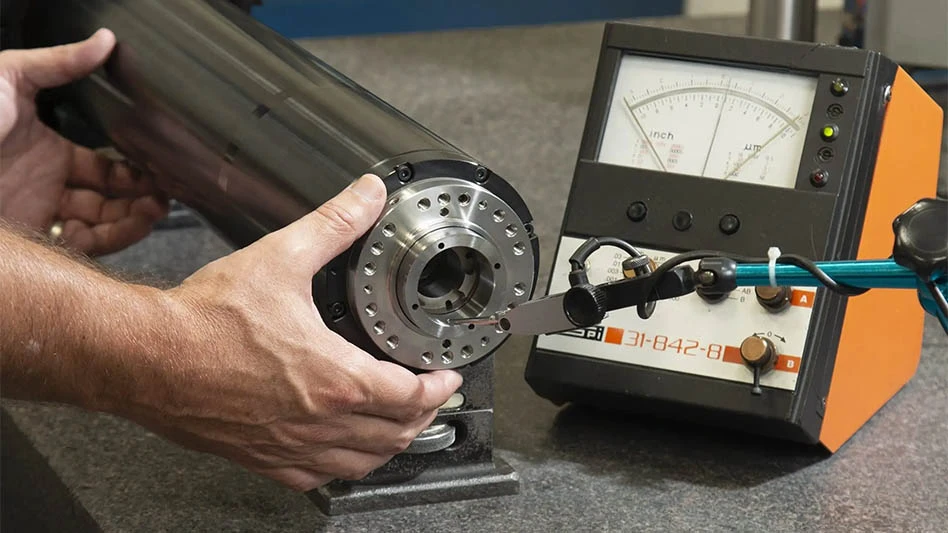It wasn’t just temperatures near 100°F that made this year’s Paris Air Show sizzle. According to its organizers, the 52nd International Paris-Le Bourget Air Show tallied announcements for $150 billion worth of orders, including 897 orders plus purchasing commitments, totaling 934 commercial aircraft. Although the trade show attendance of 142,000 was 6% less than in 2015, the 2,381 exhibitors numbered 3% more than in 2015, representing 48 countries. The 1,415,454ft2 (131,500m2) of combined exhibit area included 340 chalets, 27 national pavilions, and 140 display aircraft. Among the planes making their Paris Air Show debut were Embraer’s E195-E2, KC-390, and Legacy 450; Mitsubishi Aircraft’s MRJ90 regional jet; Kawasaki’s P1 maritime patrol aircraft; and Lockheed Martin’s F-35A fighter jet, which featured in daily U.S. Air Force demonstration flights.
French President Emmanuel Macron arrived in an Airbus A400M to open the trade show, meeting a U.S. delegation led by Transportation Secretary Elaine Chao. In all, the show hosted 290 official delegations from 98 countries and 7 international organizations, including defense, civilian, and foreign ministers and secretaries of state.
According to Tom Kallman, president and CEO of Kallman Worldwide Inc., the largest national contingent at the show, besides France, was the U.S., with more than 350 exhibitors. More than 240 exhibited in Kallman’s USA Partnership Pavilion, organized in coordination with government agencies including the Commerce, Defense, and State Departments.
Newsmakers
Boeing launched the 737 MAX 10, the newest member of its 737 MAX family, with more than 361 orders and commitments from 16 customers worldwide. A significant number of these (208 by one calculation) represented conversions from previous 737 orders to the 737 MAX 10. The largest 737 MAX 10 orders came from United Airlines (100) and Lion Air Group (50).
Boeing officials claim the 737 MAX 10 will have the lowest seat-mile cost of any single-aisle airplane ever produced. Design changes for the 737 MAX 10 include stretching the 737 MAX 9 fuselage 66" and modifying the wing for low-speed drag reduction. The airplane has the capacity to carry up to 230 passengers and uses CFM International LEAP-1B engines.
Company officials revealed Boeing’s 2017 Current Market Outlook, raising the 20-year forecast to more than 41,000 new airplanes valued at $6.1 trillion. Boeing experts also foresee significant growth in the aerospace services market, projecting $2.6 trillion demand in commercial and government services for the next 10 years. Not surprisingly, Boeing’s new Global Services business announced multi-year services agreements valued at up to $6 billion during the show that included freighter conversions, fleet care, flight training, and military aircraft and engines support agreements.
Attendees expecting Boeing to announce a new middle-market jetliner were likely disappointed, but Product Development Vice President Mike Sinnett discussed possibilities for advancing autonomous technology to help enhance safety, decision-making, and traffic management with continued projected growth in air transportation.
Five customer agreements were announced to provide solutions powered by Boeing AnalytX, which brings together more than 800 analytics experts from across the company focused on transforming data into actionable insights and customer solutions.
Boeing’s commercial incremental orders and commitments during the week totaled 571 airplanes, valued at $74.6 billion at list prices.
As further evidence that that the commercial aircraft market remains healthy, Airbus announced $39.7 billion worth of new business during the 2017 Paris Air Show. The company won commitments for a total of 326 aircraft, including firm orders for 144 aircraft worth $18.5 billion and memoranda of understanding (MoU) for 182 aircraft worth $21.2 billion.
A320 family aircraft sales and commitments accounted for 306 aircraft worth $33.8 billion. This represents 132 firm orders worth $14.7 billion and MoU for 174 aircraft worth $19.1 billion. In the widebody segment, Airbus received orders for 20 aircraft worth $5.9 billion, comprising 12 firm orders worth $3.6 billion and MoU for eight aircraft worth $2.3 billion. GE Capital Aviation Services (GECAS), the commercial aircraft leasing and financing arm of General Electric, ordered 100 A320neo family aircraft. Airbus’ backlog is now more than 6,800 aircraft.
In the A380plus, Airbus has improved fuel efficiency with enhanced large winglets, increased cabin capacity, and higher take-off weight capability to increase payload-range. Still, the A380 has received no new orders in the past four years.
To support the industry’s digital transformation, Airbus launched a new open aviation data platform called Skywise that combines Airbus’ aerospace expertise with advanced data analytics provided by Palantir Technologies. Skywise is already being tested by early-adopter airlines AirAsia, Hong Kong Airlines, Peach, Delta Air Lines, jetBlue, Emirates, and easyJet.
Airbus Digital Transformation Officer Marc Fontaine describes a future in which additive manufacturing, augmented-reality glasses, robotics that amplify human users’ capabilities, and intelligent use of advanced data analytics are the norm.
Canadian aviation financier and lessor Stellwagen placed a firm order with Airbus Defense and Space for 12 Airbus C295 multi-role, medium transport aircraft, with options for a further 12 aircraft.
Based on Airbus’ Global Market Forecast, the more than doubling of the world’s passenger aircraft fleet above 100 seats during the next 20 years will also drive a doubling of the total industry aftermarket services spend to about $3.2 trillion. This spend will be led primarily by maintenance, repair, and overhaul (MRO), while also including training, cabin and systems upgrades as major contributors.
In response, the company launched the Airbus MRO Alliance (AMA) to bring together MRO members with expertise in airframe heavy maintenance from around the world, chosen for specific and demonstrated criteria in industrial capability, capacity, performance, and quality.
Bombardier Commercial Aircraft officials announced up to $2 billion in orders and other commitments at the show, including more than 60 Q400 regional turboprop aircraft. Bombardier showcased its CS300 aircraft with launch operator airBaltic, following the C Series aircraft’s first year in service.
Engines roar
GE Aviation and its joint venture companies, led by CFM International, its 50/50 joint company with Safran Aircraft Engines, tallied more than $31 billion in orders and commitments at the Paris Air Show, including more than 1,700 GE and CFM engines as well as TrueChoice engine maintenance agreements. Among the customers were airline and aircraft leasing companies purchasing CFM LEAP-1A and -1B engines for all the A320neos and 737s on order. China Eastern Airlines is spending $3.2 billion to power and maintain engines for 70 Airbus A320neos; GE Capital Aviation Services is ordering 200 engines worth $2.9 billion for its A320neos; Spring Airlines is spending $1.7 billion for 60 Airbus A320neo/A321neo engines; and China Southern Airlines’ engines for 50 Airbus A320neos are valued at $1.5 billion. Three aircraft leasing companies round out single orders valued at more than $1 billion each, accounting for engines to power 128 single-aisle jetliners. GE Aviation’s industrial backlog of engines and long-term engine service contracts now exceeds $150 billion.
CFM’s show order-book alone is valued at more than $27.3 billion, increasing the backlog for LEAP engines to more than 12,500 units.
Rolls-Royce won a major order valued at $1.5 billion from Ethiopian Airlines to provide Trent XWB engines for 10 new Airbus A350-900 aircraft with TotalCare service support. The order brings Rolls-Royce’s manufacturing backlog to more than 1,500 engines, representing more than six years of production.
Air France Industries KLM Engineering & Maintenance is joining the Rolls-Royce CareNetwork with an agreement covering Trent XWB engines. Both parties will cooperate on the repair of Rolls-Royce engine parts and components.
Also during the show, Rolls-Royce, Purdue University, and the State of Indiana announced a $24 million jointly funded program that will establish gas turbine research capabilities at Purdue’s Zucrow Laboratories focused on turbine aerodynamic and heat transfer technologies for use in next-generation jet engines.
International Consolidated Airlines Group S.A. (IAG) officials signed a memorandum of understanding with Pratt & Whitney for the PurePower Geared Turbofan (GTF) engine to power 47 firm Airbus A320neo family aircraft. IAG is the parent company of Aer Lingus, British Airways, Iberia, and Vueling airlines.
The Mitsubishi Regional Jet (MRJ) third flight test aircraft on static display recently received type certification for its Pratt & Whitney PW1200G geared turbofan engines. www.siae.fr/en/

Explore the July 2017 Issue
Check out more from this issue and find your next story to read.
Latest from Aerospace Manufacturing and Design
- JetZero all-wing airplane demonstrator achieves milestones
- Cermet indexable inserts for medium turning operations
- Trelleborg acquires Aero-Plastics
- Industrial automation products, enclosed encoders
- #61 - Manufacturing Matters: CMMC roll out: When do I need to comply?
- AIX shows aircraft interiors are a strategic priority for global airlines
- Machine Tool Builders Roundtable: Turn equipment into expertise
- No time to waste: How to machine MedTech parts more efficiently
















